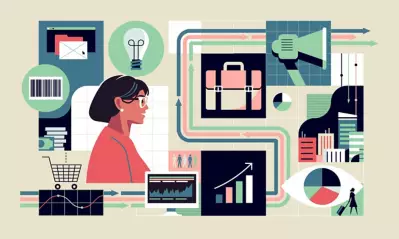What are the types of business models?

Written by Michael Feder

Reviewed by¬ÝKathryn Uhles, MIS, MSP,¬ÝDean, College of Business and IT

Virtually all businesses have at least one thing in common: They depend on effective business plans. A business plan serves as a company's road map, outlining the steps it will take to reach customers and generate profit. But before creating a business plan, a business owner must first determine their business model.Ã˝
Understanding the types of business models
The types of business models are the platforms businesses engage to become profitable. Business models might include components like product types, financial plans, sales forecasts and other details that outline a plan for success.
Whether it's an established CEO or an entrepreneur starting their own business, creating a business model and a business plan are important steps toward defining a company’s future. Partners, company executives and any other business professionals invested in a company’s future can regularly reference their business model and plan to maintain progress toward goals.
A business model is meant to serve as a comprehensive guide — one that leads a business toward success. The best types of business models and plans also help companies navigate their market while identifying potential risks and avoiding setbacks.
Put simply, a company’s business model outlines a plan to add value or grow and maintain a business. It will likely include details like employees, available resources, price points, competition, customer behaviors and potential expenses — all to help forecast how the company might perform in the future.
Those who have completed a business degree and are working can use their business experience to help inform a company’s business model. In addition, earning an MBA can teach the skills to handle investments and high-level decisions that come with deciding on or switching up a business model. However, whether a business management student or an experienced executive, it’s important to consistently evaluate a company’s progress and discover new types of business models that could propel that growth.
The importance of business models
Business models also might have a direct impact on a company’s success. When starting a new company, the model should help attract talent and generate sales. Existing companies should update business models regularly in anticipation of any changes in customer behavior or market trends.
Among other critical points, a business model should allow an organization to offer high-quality, affordable products or services. This key component will allow a business to change, scale and evolve as necessary. Including figures like cash flow, gross sales and net income in a business plan maintains companywide accountability as it grows.
Business models provide more than just fiscal direction for a company. They should also outline short- and long-term goals and provide a foundation for corporate culture. Take the time to include details about the organization’s identity in a business model.
What are the various types of business models?
Depending on the type of business, there is a wide selection of business models to choose. Some types of business models primarily outline costs and anticipated sales; others include processes, formulas, workflows and other details that contribute toward corporate success.
Here are a couple of the most common types of business models:
- Ad-based — Placing ads from other retailers and brands on a high-traffic site to gain money from clicks.
- Advertising — The use of advertising channels like social media, email and TV commercials to reach a specific customer segment. Companies can use this business model to remain familiar with customers who may be potentially interested in their products.
- Affiliate — The use of third-party individuals who generate leads or sell products on a company’s behalf and are compensated for their sales. Businesses may develop a model that focuses on enlisting consultants to sell popular products.
- µ˛∞˘¥«∞ϱ∞˘≤π≤µ±Ã˝‚Äî Individuals or organizations serve as third-party brokers who bring together consumers and retailers but take a chunk of the revenue in the process.
- Bundling — Bundling together products or services into one package.
- Crowdsourcing — Online communities collectively fund a business’s product, service or platform. Some businesses use crowdsourcing to obtain ideas, not funding, from customers or other interested individuals. For example, a snack food company may launch a campaign asking customers to help them determine a name for a food item or determine their next flavor.
- ∂Ÿæ±≤ı≥Ÿ∞˘æ±≤˙≥Ð≥Ÿæ±¥«≤‘Ã˝‚Äî Distributing goods to consumers from manufacturers, including middleman retailers.
- Fractionalization — The sale of partial access to a specific product or service. For example, a resort may allow guests the opportunity to purchase permanent access to the room for a small portion of the year.
- Franchise — A recognizable company allows individual business owners to use its branding, processes or other assets. Businesses can use the franchise business model to support their growth into new markets.
- Freemium— Offering basic options for free or at a small cost while charging for premium upgrades or subscriptions down the road.
- Leasing— Companies purchase products and then lease them to paying customers for some time. A rental car company, for example, may use this business model by purchasing vehicles and then renting them to customers for personal or business use.
- Manufacturer— Creating goods from raw materials and distributing them directly to the consumer.
- Marketplace — This model connects retailers with customers searching for their products. These companies exist not to sell their services but to securely connect buyers and sellers.
- ∞ø≤‘-ªÂ±≥æ≤π≤‘ªÂÃ˝‚Äî Providing prompt and direct services or goods for a convenience fee.
- One-for-one¬Ý‚Äî Giving a free item to those in need for every purchased product, showing social consciousness and philanthropy on the part of the business and the consumer.
- Pay-as-You-Go — Customers pay companies for the use of company-owned goods until those goods are returned to the company. This business model may include charging customers a per-hour rate for the use of company-owned vehicles or equipment.
- Product/service model¬Ý‚Äî Producing or offering quality goods or services with the expectation that consumers will buy at an acceptable price.
- Razor blade/Reverse razor blade — The sale of a product for a loss, and the sale of replacement products for a profit. Originally made popular by Gillette, this business model is also used by printer companies like HP®, which make much wider margins on replacement ink cartridges than they do the printers.
- ∏ȱ≤ı±±Ù±Ù±∞˘Ã˝‚Äî Purchasing products at a discounted price, individually or wholesale, and reselling them in a different marketplace directly to consumers.
- Retail— Basic strategizing that includes the main elements of retail businesses, from sourcing to profit.
- Subscription — The sale of products or services to customers who are billed on a per-week, per-month or per-year basis. Online streaming providers use the subscription model, where customers pay each month for access to television shows, movies and other media programs.
These and other business model types can help identify the purpose and direction of the organization.
Nine components of a business model
No matter what types of business model organizations elects to create or follow, most include similar elements. A quality business model or plan often includes several unique elements, where each element helps to further define the vision and direction.
A comprehensive business plan should contribute to a company’s business model. Ideally, a business model contains the following nine components:
- Customer relationships — This encompasses any ongoing interactions with consumers, including customer service conversations, phone calls, email correspondence and other engagement.
- Customer segments — By analyzing customers and dividing them into market segments, a business can target each segment’s common characteristics.
- Value propositions — This is a promise of value to customers in the form of a product, service or another asset, which persuades consumers to choose the organization.
- Channels — The individuals or activities that deliver products or services to customers, also known as “distribution channels.”
- Key activities — The most important tasks the business needs to do to remain successful.
- Key partners — Important partnerships and networking opportunities that contribute to the company’s ongoing success.
- Key resources — Cash, investments, materials and other assets that help the company capitalize on its business model.
- Revenue streams — The different ways the company earns money and remains profitable.
- Cost structures — Financial aspects of a company, such as structuring sales, commissions and labor to reduce overall expenses over time.
These essential pieces of a business model help define every aspect of the¬Ý company‚Äôs operations. When the company‚Äôs available resources, liquid capital, recurring revenue, customer demographic and related details are defined, the business is positioned for long-term success.
Learn more about types of business models
If you want to know more about types of business models and other parts of starting or running a business, π˚∂≥ ”∆µ offers business programs including an associate degree program with a concentration in business fundamentals, a bachelor‚Äôs degree program in business, and a¬ÝBachelor of Science in Business with a Small Business Management and Entrepreneurship Certificate.Ã˝
Contact π˚∂≥ ”∆µ for more information.Ã˝

ABOUT THE AUTHOR
A graduate of Johns Hopkins University and its Writing Seminars program and winner of the Stephen A. Dixon Literary Prize, Michael Feder brings an eye for detail and a passion for research to every article he writes. His academic and professional background includes experience in marketing, content development, script writing and SEO. Today, he works as a multimedia specialist at π˚∂≥ ”∆µ where he covers a variety of topics ranging from healthcare to IT.

ABOUT THE REVIEWER
Currently Dean of the College of Business and Information Technology,¬ÝKathryn Uhles has served π˚∂≥ ”∆µ in a variety of roles since 2006. Prior to joining π˚∂≥ ”∆µ, Kathryn taught fifth grade to underprivileged youth in Phoenix.
This article has been vetted by π˚∂≥ ”∆µ's editorial advisory committee.Ã˝
Read more about our editorial process.





